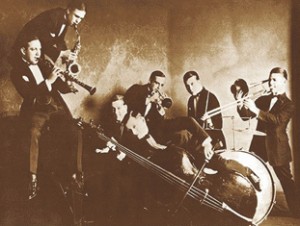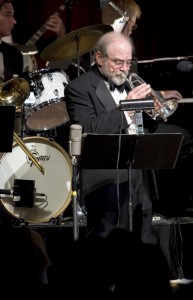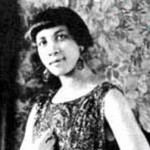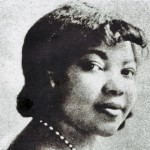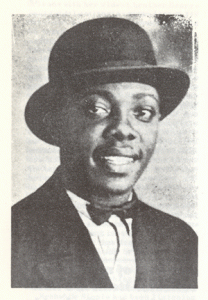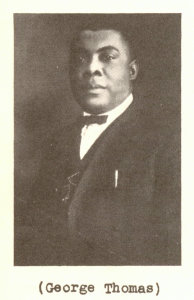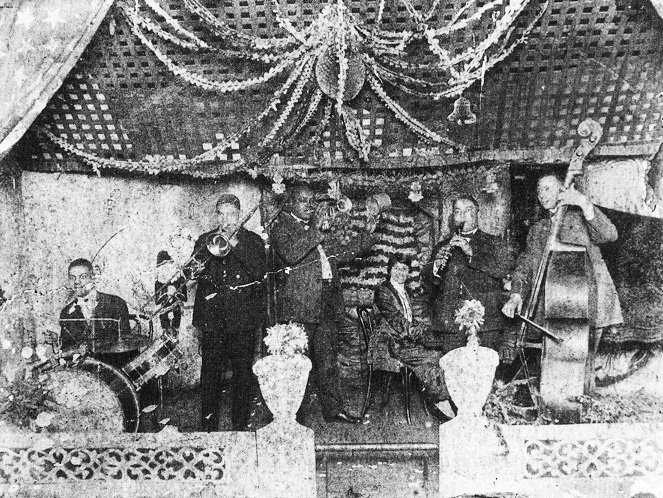
King Oliver's Creole Band at the Royal Gardens c. 1919. Photo from Pioneers of Jazz by Laurence Gushee.
By the 1920s jazz was on the move. In the wake of America's entry into WWI in 1917 the promise of well-paying manufacturing jobs and a better life "up North" lured tens of thousands of rural, southern African-Americans, weary from struggles with racism and economic hardship, to the South Side of Chicago. A growing entertainment district drew the best talent from New Orleans, Texas and the Mississippi Delta.
Jazz Age Chicago could boast a rich mix of New Orleans jazz pioneers like Joe 'King' Oliver, Louis Armstrong, Jelly Roll Morton, and a white group known as The New Orleans Rhythm Kings, plus the "Texas Blues" of Sippie Wallace and her boogie-woogie-playing brothers.
In the 1920s Chicago’s South Side "bright-light" district "The Stroll" was the heart of the jazz scene. Peppered with nightclubs, pool halls, tattoo parlors and vaudeville houses, it was home to the city’s 100,000 African Americans. During the day the city was segregated but at night, differences between black and white became somewhat blurred. Chicago nightlife knew no boundaries and the sound of jazz seemed to seep up out of the sidewalks.
In the downtown Loop the hot spot for jazz was the Friar’s Inn, a basement cabaret where The New Orleans Rhythm Kings held forth. Their exciting new music drew an odd mix of businessmen, gangsters and jazz-crazed high school students. Out on the pavement, too young to get inside, kids from Austin High School like Jimmy McPartland, Dave Tough and Eddie Condon kept hoping someone would open the door so they could listen in. Recalling the heady atmosphere of the great musical "melting pot" in Jazz Age Chicago, with a script based on historical and biographical written accounts and recordings, Riverwalk Jazz welcomes two frequent guests from New Orleans—the Obie award-winning actor and singer Vernel Bagneris and renowned blues singer Topsy Chapman—plus the great jazz pianist Shelly Berg.
Jim Cullum and the Band lead off with a high energy performance of Joe Oliver's classic, called "Too Late." With Shelly Berg on piano, Topsy Chapman sings blues composed by native Texan Sippie Wallace, plus "Chicago Bound," a song identified with Ida Cox, also known as "The Famous Migration Blues."
The self-proclaimed "inventor of jazz," pianist and composer Jelly Roll Morton, was at the center of the 1920s' Chicago jazz scene. Vernel Bagneris portrays Jelly Roll and here is what the great jazzmen had to say about those times:
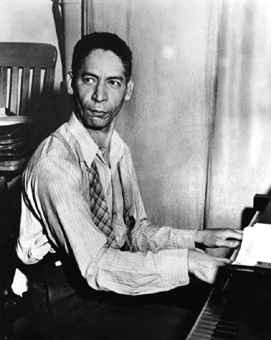
Jell Roll Morton. Photo courtesy nashua.edu.
"In Chicago you could go anywhere you wanted— regardless of creed or color. That’s how it came to be one of the earliest places jazz arrived—all because of nice treatment—we folks from New Orleans were used to nice treatment." We discover a softer side of Jelly Roll, as Vernel reveals Morton courting his sweetheart Mabel, an exotic dancer at the Plantation Cafe. And Vernel sings one of Jelly's lesser-known compositions, a love song, called "Why?"
In the Twenties Chicagoans listened and danced to jazz in all sorts of settings. There were segregated nightclubs, of course, but increasingly, cabarets were "black and tans" where the races mixed freely. Black vaudeville houses put on midnight shows where whites sat in the balconies, just as blacks would do in white theaters Chicago’s cabarets and vaudeville theaters put on great shows. Blues shouters shared the bill with comedy skits, dancing duos, jazz bands and acrobats. On the other hand, the venue for "boogie woogie" was usually somebody’s packed apartment, where only top players got a chance to sit at the piano.
Shelly Berg closes the show with an exhilarating performance of the seminal boogie woogie piece which had a deep influence on the development of boogie woogie blues in 1920s' Chicago. This very first boogie woogie piece to be published was composed by two brothers from Texas—George Washington Thomas and twelve-year-old Hersal—and they called it "The Five's."
Photo credit for Home Page: "The Five's," 1921 Sheet Music. Courtesy boogiewoogie.com.
Text based on Riverwalk Jazz script by Margaret Moos Pick ©2011


